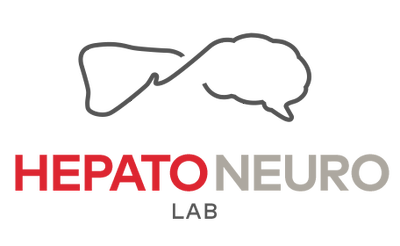
We just release around 20 publications in open access on web University's server, Papyrus.
How to make your old articles into open access
Movement towards "open access" (free access ) propagates in the scientific community, so that the research results are available to all, free of charge. Indeed, the editors of scientific journals primarily use a model of "pay-wall", the user has to pay around ~30$ U.S. for only able to read an article. Currently, university's librairies pays subscriptions, which allows academic community to have access to a number of journals, depending on the budget available. Recently, even the top universities like Harvard denounce these prohibitive costs1 . The scientists themselves want more than their research circulate freely while granting agencies that fund research from public funds now require that scientific publications are available to all (usually a maximum of 12 months).
But what happens publications published several years ago?
Is it still possible to make them available without violating copyright agreements signed, here's how:
- Do a search on Romeo to know the specific policies the journal in which your article was published.
- You will see this:

- In most cases you will learn that you can archive a personal version (author can archive post-print (ie final draft post-refereeing)), that is to say, the text which was accepted after peer-revision, but the layout (pdf file), the "value added" of the publisher. It is good to check on website of the journal/publisher, to see if more specific conditions applied (often an embargo period of between 6 and 36 months).
- Use your text (often .doc format) that you saved in your personal archives. If you do not have it:
- Get the text on the publisher's website (sometimes available in html format), copy it to a text editor
- Alternatively, extract text directly from the pdf file with a tool like this
- Find a directory where you can download your article. Most universities make available servers to their teachers and students (in our case, papyrus). Otherwise, do a search on this site.
These directories are perennial and provide an address that you can spread, either on your website, your CV, social networks or sites like Mendeley and ResearchGate.
A couple of hours well spent that will benefit the entire scientific community!
1Harvard University says it can't afford journal publishers' prices
More lecture on open access
- Nature 495, 426–429, The cost of knowledge doi:10.1038/495426a
- Budapest Open Access Initiative
- Open science movement
- CIHR open access policy
Publications freely available :
- Bosoi C et al., 2012, Free Radic Biol Med, Systemic oxidative stress is implicated in the pathogenesis of brain edema in rats with chronic liver failure.
- Rose C, 2010, Neurochem Int, Increase brain lactate in hepatic encephalopathy: Cause or consequence?
- Kristiansen R et al., 2010, Scand J Gastroenterol, Neuropathological changes in the brain of pigs with acute liver failure.
- Yang X et al., 2010, Metab Brain Dis, Portacaval anastomosis-induced hyperammonemia does not lead to oxidative stress.
- Bosoi C et al., 2009, Metab Brain Dis, Identifying the direct effects of ammonia on the brain.
- Chatauret N et al., 2006, J Hepatol, Direct molecular and spectroscopic evidence for increased ammonia removal capacity of skeletal muscle in acute liver failure.
- Sen S et al., 2006, Crit Care Med, Effect of albumin dialysis on intracranial pressure increase in pigs with acute liver failure: a randomized study.
- Ytrebø L et al., 2006, Scand J Gastroenterol, Systemic and regional hemodynamics in pigs with acute liver failure and the effect of albumin dialysis.
- Bélanger M et al., 2005, J Hepatol, Mild hypothermia prevents brain edema and attenuates up-regulation of the astrocytic benzodiazepine receptor in experimental acute liver failure.
- Rose C et al., 2005, J Biol Chem, Acute insult of ammonia leads to calcium-dependent glutamate release from cultured astrocytes, an effect of pH.
- Vaquero J et al., 2005, J Hepatol, Keeping cool in acute liver failure: rationale for the use of mild hypothermia.
- Jalan R et al., 2004, Metab Brain Dis, Hypothermia in acute liver failure.
- Ytrebø L et al., 2004, Scand J Gastroenterol, Contractile response of femoral arteries in pigs with acute liver failure.
- Zwingmann C et al., 2004, Brain Res, Selective alterations of brain osmolytes in acute liver failure: protective effect of mild hypothermia.
- Chatauret N et al., 2003, Gastroenterology, Effects of hypothermia on brain glucose metabolism in acute liver failure: a H/C-nuclear magnetic resonance study.
- Desjardins P et al., 2003, Neurochem Int, Induction of astrocytic cyclooxygenase-2 in epileptic patients with hippocampal sclerosis.
- Chatauret N et al., 2002, Metab Brain Dis, Mild hypothermia in the prevention of brain edema in acute liver failure: mechanisms and clinical prospects.
- Rose C, 2002, Metab Brain Dis, Increased extracellular brain glutamate in acute liver failure: decreased uptake or increased release?
- Sauvageau A et al., 2002, Metab Brain Dis, Increased expression of "peripheral-type" benzodiazepine receptors in human temporal lobe epilepsy: implications for PET imaging of hippocampal sclerosis.
- Chatauret N et al., 2001, Metab Brain Dis, Mild hypothermia prevents cerebral edema and CSF lactate accumulation in acute liver failure.
- Desjardins P et al., 1999, Metab Brain Dis, Effect of portacaval anastomosis on glutamine synthetase protein and gene expression in brain, liver and skeletal muscle.




